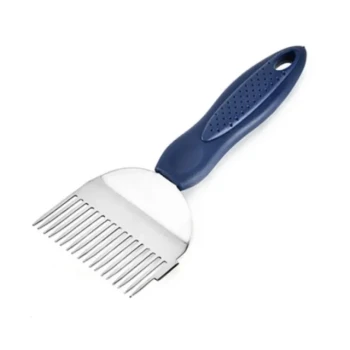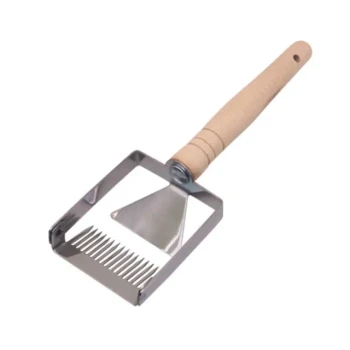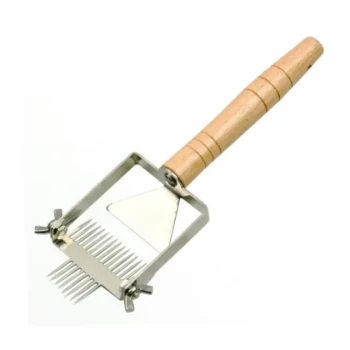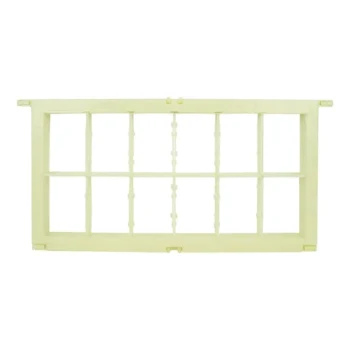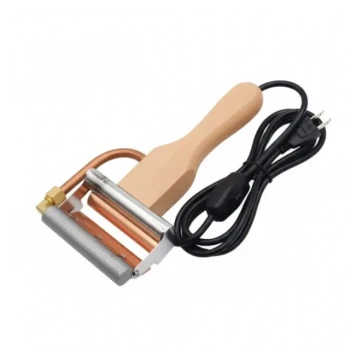To succeed with a Flow Hive, you must recognize that its innovative harvesting system does not change the fundamental requirements of beekeeping. Success hinges on a deep understanding of bee biology and diligent hive management. The core tasks remain the same: conducting regular inspections, monitoring hive health, and understanding the flow mechanism to ensure you harvest at the right time.
The central truth of Flow Hive ownership is that the beekeeper's primary job is to care for the bees, not just to harvest honey. The technology simplifies one task, but the responsibility for the colony's health and survival remains entirely with you.

Beyond the Tap: Mastering Beekeeping Fundamentals
A healthy, thriving colony is the prerequisite for any honey harvest, regardless of the equipment you use. The Flow Frames are a honey super—a pantry for the bees—while the heart of the colony lives and works in the brood box below.
Regular Hive Inspections are Non-Negotiable
Your most important task is to regularly open the hive and inspect the brood box. This is the only way to catch small problems before they become catastrophic.
During an inspection, you are checking for a strong brood pattern, the presence of the queen (or evidence of her, like fresh eggs), and adequate food stores.
Most importantly, you must be vigilant for pests and diseases, especially the Varroa destructor mite, which is the single greatest threat to honey bee colonies.
Understanding Bee Behavior and Health
A successful beekeeper learns to read the language of the hive. Observe the activity at the entrance. Are the bees actively foraging and bringing in pollen?
A sudden change in temperament, a decrease in activity, or an unusual number of dead bees can all be early warning signs of a problem within the hive that requires immediate investigation.
Managing the Brood Box First
The health, strength, and population of the colony are all determined by what happens in the brood box. Your management of this area dictates everything.
Ensure the bees have enough space to expand the colony but not so much that they struggle to defend it. This is where you will manage swarm prevention and ensure the colony is strong enough to survive winter.
Using the Flow Frame Mechanism Correctly
While the fundamentals of beekeeping are paramount, you must also understand how the Flow Hive technology works to use it effectively and safely for the bees.
Know When the Frames are Ready
Do not harvest honey until the bees have completely filled a frame and capped the cells with a layer of white beeswax. You can check this through the side observation window.
Harvesting uncapped honey, which has a high water content, will result in fermentation and spoil your entire harvest. Patience is critical.
Perform a Gentle and methodical Harvest
Only open one Flow Frame at a time. This minimizes disturbance to the hive and reduces the risk of large-scale honey leaks that can trigger robbing from other colonies.
Ensure the bees have sealed the cells with wax before you "crack" the frame open with the Flow key. This preparation by the bees is essential for a clean harvest.
Post-Harvest Care
After the honey is drained, you must reset the frame into its original position. The bees will then uncap the cells, repair any broken wax, and begin the process of refilling the frame with nectar.
Understanding the Trade-offs and Common Pitfalls
The Flow Hive is an excellent tool, but it's essential to approach it with a clear understanding of its limitations and the common misconceptions that can lead to failure.
The Misconception of "Zero-Maintenance" Beekeeping
The most significant pitfall is believing the Flow Hive is a "set it and forget it" system. It is not. It requires the same, if not more, diligent monitoring and inspection as a traditional hive.
The convenience of harvesting can create a false sense of security, leading beekeepers to neglect the essential hive inspections that keep a colony alive.
Potential for Neglecting Colony Health
Because you don't have to "crack open" the hive to harvest, it can be tempting to avoid doing so for health checks. This is a critical error.
You cannot assess queen health, brood patterns, or pest levels through the observation window. You must suit up and inspect the brood box regularly.
Making the Right Choice for Your Goal
Your approach should be dictated by your experience level and primary objective.
- If your primary focus is learning beekeeping as a beginner: Treat the Flow Hive as a standard hive with a unique honey super. Prioritize learning core apiary skills from a mentor or local beekeeping club before you even think about harvesting.
- If your primary focus is harvesting honey with minimal disruption: Leverage the system's design for a gentle harvest, but do not let it lure you into skipping your essential, hands-on hive health inspections in the brood box.
Ultimately, the Flow Hive is a tool, and your success depends entirely on your skill and dedication as a beekeeper.
Summary Table:
| Key Area | Essential Tip for Success |
|---|---|
| Hive Health | Conduct regular, hands-on inspections of the brood box for pests, disease, and queen status. |
| Harvesting | Only harvest when honey frames are fully capped by the bees to prevent fermentation. |
| Colony Management | Prioritize bee health and behavior observation over the convenience of the harvesting mechanism. |
Ready to equip your apiary for success?
Whether you're a commercial beekeeper managing hundreds of hives or a distributor supplying the industry, having reliable, high-quality equipment is fundamental. HONESTBEE supplies durable beekeeping supplies and equipment through wholesale-focused operations, helping you build a stronger, more productive operation.
Contact our team today to discuss your wholesale needs and how we can support your beekeeping goals.
Visual Guide

Related Products
- Mesh Ventilated 3 Layer Goatskin Beekeepers Gloves for Beekeeping
- Stainless Steel Triangle Support Honey Strainer and Filters
- Professional Galvanized Hive Strap with Secure Locking Buckle for Beekeeping
- Plastic Handle Single Row Artificial Fiber Bee Brush
- Professional Multi-Function Uncapping Fork with Integrated Blade for Beekeeping
People Also Ask
- What factors should be considered when selecting beekeeping gloves? Balance Protection and Dexterity
- What is the recommendation for beginning beekeepers regarding gloves? Build Confidence and Safety
- Do beekeeping gloves completely prevent stings? Maximize Your Hive Safety and Confidence
- What is the role of gloves in beekeeping, especially for beginners? Build Confidence & Safety
- Why do some beekeepers choose not to wear protective gear? Experience vs. Dexterity in Hive Management




